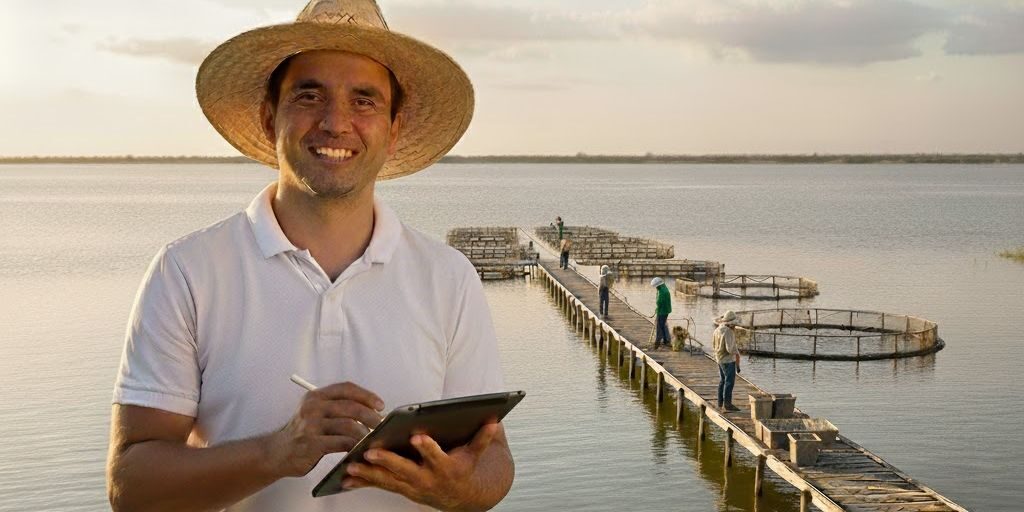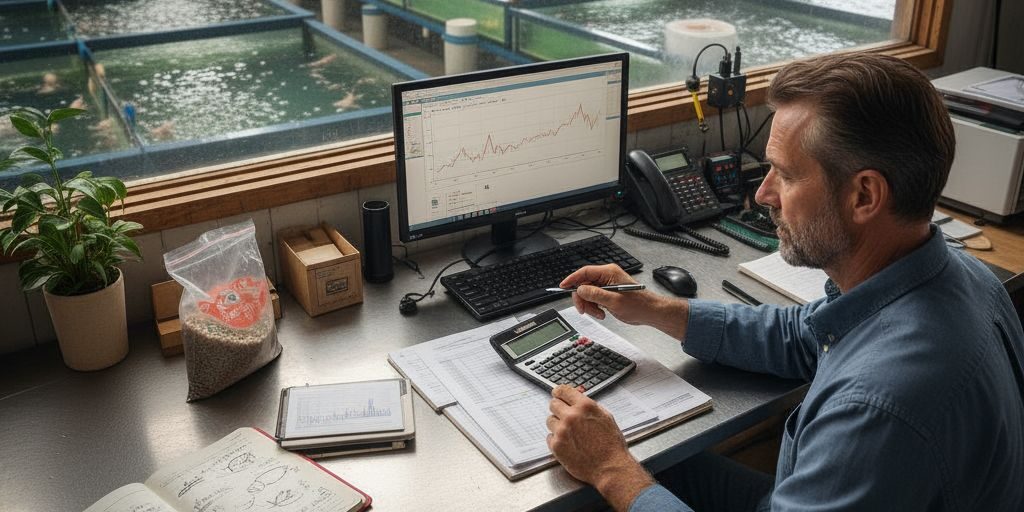- Software Gestor para Aquicultura
- (85) 2139-6730
- contato@despesca.com.br
Aquaculture Cost Spreadsheet: The Definitive Guide to Not Missing Any Expense

Aquaculture Production Cycle Planning: The 10 Most Common Mistakes and How to Avoid Them
13/10/2025Aquaculture Cost Spreadsheet: The Definitive Guide to Not Missing Any Expense
Financial management is, without a doubt, one of the most critical pillars for the success and sustainability of any aquaculture venture. Many producers, while excellent in the technical management of their stock, often face difficulties in accurately measuring all expenses involved in the production cycle. The lack of rigorous control can lead to inadequate pricing, reduced profit margins, and, in extreme cases, business unfeasibility. Therefore, developing and maintaining a detailed aquaculture cost spreadsheet is not a luxury, but a strategic necessity.
This meticulous control allows the producer to identify bottlenecks, optimize resource use, and make more assertive decisions. After all, how can one truly know if an operation is profitable without knowing every cent invested? Below, we present a complete structure for you to set up your cost spreadsheet, ensuring no expense is overlooked.
Structuring the Aquaculture Cost Spreadsheet: Fixed and Variable Costs
The first step towards effective financial control is to clearly differentiate between fixed and variable costs. This separation is fundamental as it helps understand which expenses occur regardless of the production volume and which are directly linked to it.
Fixed Costs: These are expenses the farm will incur every month, whether there is production or not. They form the foundation of your business and must be covered for the operation to continue functioning. These include:
- Fixed labor: Salaries of administrative staff, managers, and maintenance personnel.
- Rent or lease: If the property is not owned.
- Depreciation: Wear and tear of machinery, equipment (aerators, blowers, vehicles), and structures (ponds, sheds).
- Taxes and fees: Property taxes, licensing fees, and other annual fiscal obligations.
- Insurance: Property, crop, or life insurance for employees.
- Regular maintenance: Scheduled expenses for the upkeep of equipment and facilities.
Variable Costs: These costs fluctuate with the level of production. The more you produce, the higher they will be. Monitoring them closely is crucial for calculating the production cost per kilogram. The main ones are:
- Feed: Usually, the largest single item in production costs. It is essential to record daily or weekly consumption.
- Post-larvae or fingerlings: The initial investment in quality animals.
- Electricity: Consumption of pumps, aerators, and other electrical equipment that operate according to the cycle’s needs.
- Inputs: Probiotics, prebiotics, soil and water correctives (lime, etc.), medications, and disinfectants.
- Fuel: Used in vehicles and generators.
- Temporary labor: Hiring personnel for harvests, sorting, or other specific activities.
Detailing Costs: Direct and Indirect
In addition to the previous classification, it is equally important to organize expenses as direct or indirect. This view helps understand what directly impacts production and what constitutes support expenses.
Direct Production Costs: These are all expenses directly applied to the animal rearing. Without them, production simply cannot happen. The clearest examples are feed, post-larvae/fingerlings, energy for aeration, and inputs applied directly to the ponds. In your aquaculture cost spreadsheet, these items should have a prominent section.
Indirect Costs: These are expenses necessary for the general maintenance of the farm but are not directly tied to a specific batch or pond. They include administrative costs (office supplies, telephone, internet), salaries of the management team, and depreciation of general-use equipment. Although not directly applied to the tanks, their proper allocation across production cycles is vital for determining the final product cost.
Technology as an Ally: From Manual to Automated
Maintaining an aquaculture cost spreadsheet in programs like Excel is an excellent start. However, as operations grow, manual control becomes more complex, time-consuming, and prone to errors. Data entry can be flawed, formulas can be corrupted, and long-term analysis becomes challenging.
This is where technology becomes an indispensable ally. Management software, such as Despesca, was developed specifically for the realities of aquaculture. It automates data entry, integrates inventory control of inputs and feed with production costs, and generates detailed reports with just a few clicks. With specialized software, producers stop spending time filling out spreadsheets and start focusing on the strategic analysis of information.
By recording every feed application, every input purchase, and every operational expense directly into the system, the manager gains a clear, real-time view of the cost per pond, per cycle, and per kilogram produced. This precision not only allows for fairer and more competitive pricing but also enables immediate identification of any deviations, facilitating quick and efficient corrections to ensure maximum profitability for your farm.




